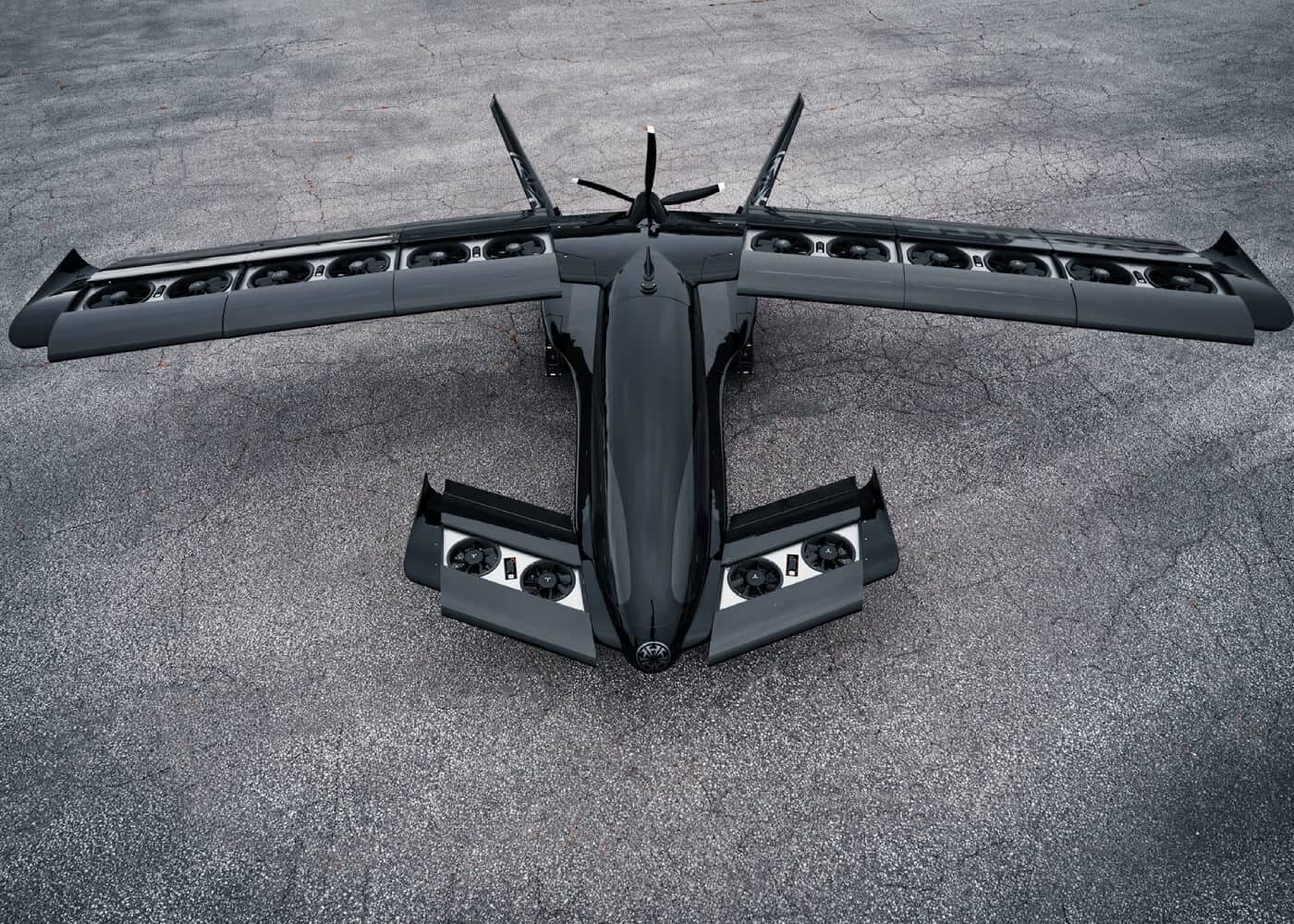Oshawa Ontario Tech partners with Horizon Aircraft to develop hybrid-electric eVTOL
Published May 1, 2023 at 4:11 pm

Ontario Tech University and Peterborough’s Fleming College have partnered with Horizon Aircraft to get a hybrid electric Vertical Take-off and Landing (eVTOL) aircraft off the ground.
Horizon, based out of the Kawartha Lakes Airport outside of Lindsay, has developed the prototype Cavorite X5, a hybrid electrical five-passenger craft which can reach speeds of 450 km/h and offer a 500 kilometre range.
The company is working with Ontario Tech and Fleming on the design and prototypes for mechanisms for the aircraft to make it more efficient, lighter and able to withstand high vibrations, stresses and large loads.
A half-size model has been built and has been tested at the Oshawa university’s famed ACE wind tunnel, which can re-create weather conditions from the blistering heat in Death Valley to the frigid conditions of the Arctic with wind speeds up 280 km/hr.
Powered by an advanced electric motor coupled with a high efficiency gas engine, and designed around system redundancy and safety, the X5 is considered the future of regional and urban transportation.
The aircraft has a patented fan-in-wing vertical lift system, as opposed to the undercarriage thrusts of the Harrier Jump Jets of Falklands War fame, for short runway or urban landing situations.
The Natural Science and Engineering Council of Canada jointly awarded the three institutions $750,000 over three years through the Innovation Link program to support the project. It is the second collaborative research project undertaken by the two schools and Horizon.
“We are looking to our academic research partners to assist us with their expertise in additive manufacturing, topology optimization, modelling, and prototyping,” Horizon CEO Brandon Robinson said in a news release. “Advanced manufacturing processes and technologies such as these are proving to be an efficient and highly effective way to prototype innovative new aerospace parts. This is pivotal to the success of our eVTOL system.”
Fleming College’s Dr. Fereydoon Diba, lead research scientist with the college’s amusingly named Centre for Advancement in Mechatronics and Industrial Internet of Things (CAMIIT) is spearheading the project, providing expertise in mechatronics system design, product development, advanced manufacturing, and rapid prototyping.
The idea for the aircraft started with Robinson, an aircraft engineer and visionary and former CF-18 pilot, wanting to overhaul his 1946 Republic Seabee with modern parts, leading to him to develop a more efficient power plant, starting with a V8 Corvette LS engine, which more than doubled his horsepower and gave him access to efficient and reliable modern systems.
That led to the experimental X3, which pivoted into the X5 Cavorite as the eVTOL aircraft became technically feasible.
Horizon Aircraft has now completed a series of aerodynamic tests and transition flight tests on the X5 at the ACE Climatic wind tunnel in Oshawa, with Robinson calling the tests a “complete success.”
“Aircraft performance exceeded our expectation,” he said. “We explored forward speeds of up to almost 100 km/h, measuring aerodynamic forces, control authority, and mechanical system function with the wings open at varying fan speeds. We were particularly happy with pitch and roll stability and control throughout the entire transition envelope, as well as the embedded fan performance.”
The success of these tests, he added, means the development team can use the feedback to further improve the design through CFD modelling, and safely advance toward outdoor flight testing.
Cavorite X5 won’t be an all-electric VTOL – at least not until the operational infrastructure and battery technology permit – but one with a hybrid-electric propulsion, enabling it to cover up to 270 nautical miles and reach a top speed of 250 knots/287 mph.
This Canadian hybrid VTOL also claims to be one of the few of its kind that can fly most of the time like a conventional aircraft, improving both performance and safety, with the added bonus of an easier certification process.
Horizon is planning to kick off flight testing for its full-scale hybrid aircraft by 2025.

The Horizon aircraft prototype with CEO Brandon Robinson
Technical specifications:
- Passengers: 5 (4 + pilot)
- Wingspan: 15.3 m
- Length: 11.6 m
- Height: 2.8 m
- Max Gross: 1,633 kg
- Useful Payload – Vertical Takeoff: 363 kg
- Useful Payload – Conventional Takeoff: 635 kg
- Fuel Type: gas + electric
- Min Takeoff Runway: 0 m
- Max Cruise: 450 km
- Max Range (includes reserve fuel): 500 km
To see the video of the wind tunnel testing from ACE visit https://www.youtube.com/watch?v=rDzwlF2MDp8.
INdurham's Editorial Standards and Policies




